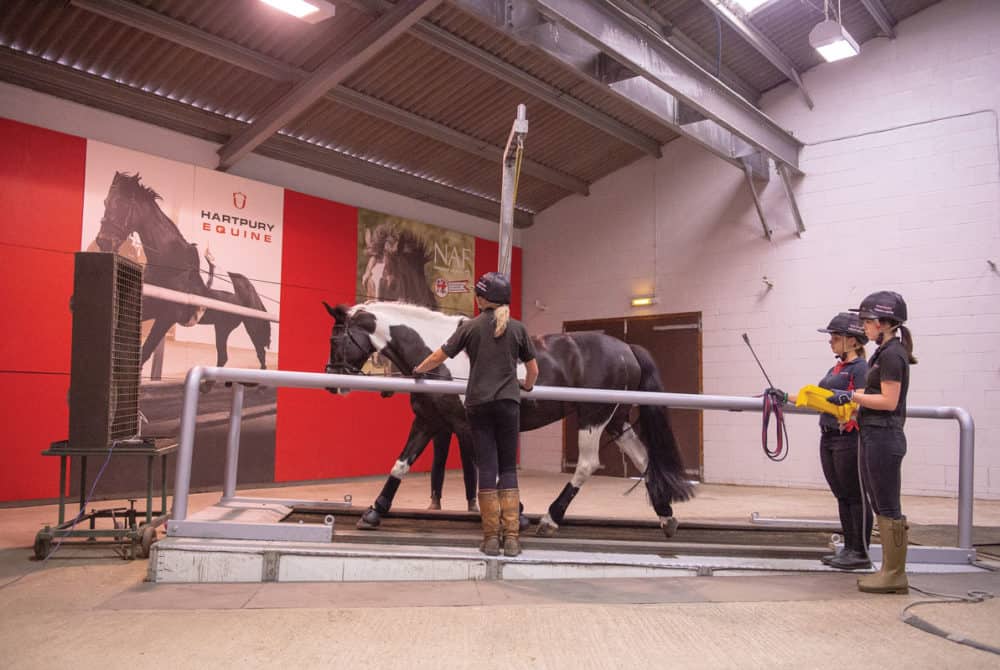Equine Treadmills
Posted 11th October 2019
Treadmills have a valuable role to play, particularly for horses coming back from injury. Kathryn Nankervis explains more

Equine rehabilitation centres are becoming increasingly common across the country and, while facilities vary, many have some form of equine treadmill. The size, maximum speed and operational gradient of each model differs, but the principles of this type of exercise are the same. Just as with human treadmills, an equine version is made up of a belt that travels backwards, requiring the horse to walk in time to keep up. Treadmills have many uses for horses of different types or for different reasons.
The basics
One of the principles of treadmill exercise that many people struggle to get their head round is that although the horse is moving his legs to keep pace with the belt, the rest of his body is actually static in relation to its surroundings.
Because the horse is only moving relative to the treadmill belt, he doesn’t have the same momentum as a horse moving over the ground. This means that, although sometimes putting your horse on a treadmill may feel slightly daunting, it’s actually a very safe form of exercise.
However, unlike a horse exercising over land, there’s no airflow over his body as he moves forward, helping to dissipate heat generated by the muscles as they work. To ensure horses don’t get too hot while working on a treadmill, powerful fans are used at the front of the treadmill to help keep him cool.
Baby steps
It normally only takes two to three sessions for a horse to become accustomed to treadmill exercise to the point where his movement pattern in all gaits settles to how it would be on land. This process is called habituation and centres may have slightly differing approaches to achieve a common goal. They should be able to explain their habituation procedure so you know what to expect before you arrive.
When a horse first starts walking on a treadmill, he’ll move with short, quick and wide steps until he’s confident. This movement pattern is an indicator of him establishing his balance and, as such, it’s really useful to have two handlers with the horse during treadmill exercise to help keep him straight. His handlers can provide reassurance and use voice commands to prepare him for transitions in the same way you might when ground schooling.
Do your research
Speak to your vet for advice on choosing the most appropriate treadmill facility in your area. A session should normally be no longer than 20–25 minutes and the whole process should be stress-free and enjoyable for your horse.
Pick up a copy of December Horse&Rider, on sale 17 October, to find out more about equine treadmills.










